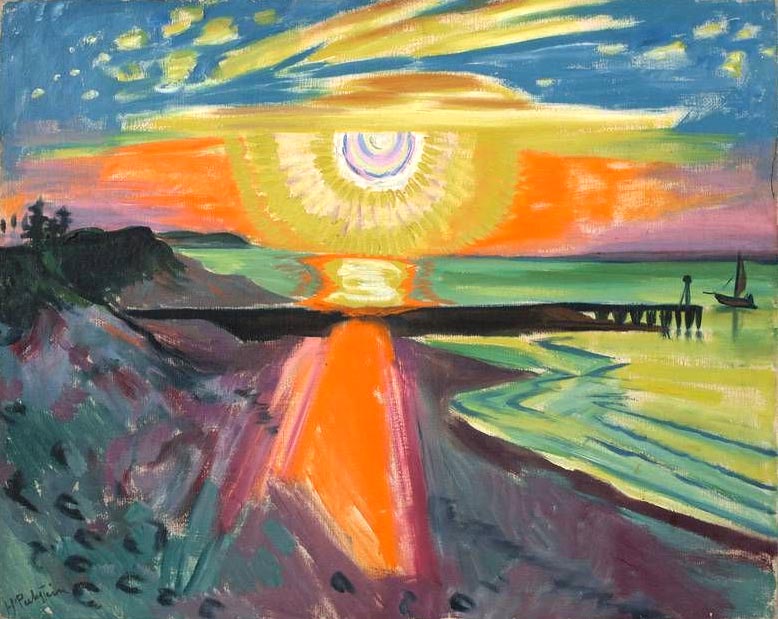The Watch Avengers: Endgame OnlineJames Webb Space Telescope is profoundly powerful.
A newly-released galactic image from the European Space Agency shows a deep view of the cosmos that other telescopes can't see. The universe's most ancient galaxies are so far away that their light has literally stretched out into wavelengths that aren't visible to our eyes. But "Webb's speciality," NASA emphasizes, is to view these longer, infrared wavelengths of light.
When Webb views such far-off places in space, the instrument is looking back in timebillions of years. This image shows what those galaxies looked like when the light left, long ago.
Here's what else you're seeing in the image below:
In the foreground, near the bottom, is a glorious example of a spiral galaxy, called LEDA 2046648. At around 1 billion light years away, it's much closer than the distant galaxies beyond. Our Milky Way is a spiral galaxy, too.
Everything else in this image is a galaxy, except for the six-pointed objects, which are much closer stars. (Bright points of light in a telescope like Webb can cause something called "diffraction spikes.") "A crowded field of galaxies throngs this Picture of the Month from the NASA/ESA/CSA James Webb Space Telescope, along with bright stars crowned with Webb’s signature six-pointed diffraction spikes," the European Space Agency (ESA) explained.
Many of the distant galaxies look reddish or orangish. As the universe expands and these celestial objects move farther away, their light has stretched. "Webb’s keen infrared vision helps the telescope peer back in time, as the light from these distant galaxies is redshifted towards infrared wavelengths," the ESA said.
SEE ALSO: Many of the Webb telescope’s greatest discoveries won't come from any amazing pictures A deep view of the cosmos. LEDA 2046648 is the large galaxy at the bottom. Credit: ESA Webb / NASA / CSA / A. Martel
A deep view of the cosmos. LEDA 2046648 is the large galaxy at the bottom. Credit: ESA Webb / NASA / CSA / A. Martel This Tweet is currently unavailable. It might be loading or has been removed.
Want more scienceand tech news delivered straight to your inbox? Sign up for Mashable's Top Stories newslettertoday.
The Webb telescope is a scientific collaboration between NASA, the ESA, and the Canadian Space Agency. In this image, astronomers were actually capturing views of galaxies and stars to calibrate the telescope's sensitive instruments. The greater research goal is to compare unprecedented views of the first, earliest galaxies with galaxies closer to us, in the Milky Way. Astronomers want to understand how galaxies, like our own, grew and evolved.
Many of these galaxies contain hundreds of billions of stars, and many, many more planets. That adds up to an incomprehensible number of strange new worlds, perhaps places we can't even imagine. Though some, we can.
(Editor: {typename type="name"/})
 Gods of War
Gods of War
 Staff Picks: Ballet, Bob Dylan, and Black Smudges by The Paris Review
Staff Picks: Ballet, Bob Dylan, and Black Smudges by The Paris Review
 Cooking with Ntozake Shange by Valerie Stivers
Cooking with Ntozake Shange by Valerie Stivers
 Sorry, Peter Pan, We’re Over You by Sabrina Orah Mark
Sorry, Peter Pan, We’re Over You by Sabrina Orah Mark
 NYT Connections Sports Edition hints and answers for April 26: Tips to solve Connections #215
NYT Connections Sports Edition hints and answers for April 26: Tips to solve Connections #215
Apple iPhone 17 Pro leaks highlight major new design change
 It looks like the iPhone 17 will give people some new room to express themselves.Prominent leaker Ma
...[Details]
It looks like the iPhone 17 will give people some new room to express themselves.Prominent leaker Ma
...[Details]
International Dog Day deals: Save 50% at Petco through DoorDash or up to 35% at Wild One
 TL;DR:August 26 is International Dog Day and you can celebrate by shopping deals on dog supplies at
...[Details]
TL;DR:August 26 is International Dog Day and you can celebrate by shopping deals on dog supplies at
...[Details]
The Soviet Tolstoy’s Forgotten Novel by Robert Chandler
 The Soviet Tolstoy’s Forgotten NovelBy Robert ChandlerJune 13, 2019Arts & CultureVasily Grossman
...[Details]
The Soviet Tolstoy’s Forgotten NovelBy Robert ChandlerJune 13, 2019Arts & CultureVasily Grossman
...[Details]
Sorry, Peter Pan, We’re Over You by Sabrina Orah Mark
 Sorry, Peter Pan, We’re Over YouBy Sabrina Orah MarkJune 19, 2019HappilySabrina Orah Mark’s monthly
...[Details]
Sorry, Peter Pan, We’re Over YouBy Sabrina Orah MarkJune 19, 2019HappilySabrina Orah Mark’s monthly
...[Details]
Useful or Little Known Android Features
Why we love watching private chefs in the Hamptons
 Certain things mark the unofficial start of summer: the first balmy night, a sticky popsicle, or a s
...[Details]
Certain things mark the unofficial start of summer: the first balmy night, a sticky popsicle, or a s
...[Details]
Bored Ape NFT investors sue Yuga Labs after NFT values crater
 I hate to do this to you, but I have to remind you of something seared into my brain: those hideous,
...[Details]
I hate to do this to you, but I have to remind you of something seared into my brain: those hideous,
...[Details]
Fecund Sounds Like a Swear by Nina MacLaughlin
 Fecund Sounds Like a SwearBy Nina MacLaughlinJune 14, 2019Summer SolsticeIn this series on the summe
...[Details]
Fecund Sounds Like a SwearBy Nina MacLaughlinJune 14, 2019Summer SolsticeIn this series on the summe
...[Details]
 SAVE $125:The 8-piece SimpliSafe Indoor Home Security System is on sale for $124.99 at Best Buy, dow
...[Details]
SAVE $125:The 8-piece SimpliSafe Indoor Home Security System is on sale for $124.99 at Best Buy, dow
...[Details]
Summer is Made of the Memory of Summer by Nina MacLaughlin
 Summer is Made of the Memory of SummerBy Nina MacLaughlinJune 21, 2019Summer SolsticeToday marks the
...[Details]
Summer is Made of the Memory of SummerBy Nina MacLaughlinJune 21, 2019Summer SolsticeToday marks the
...[Details]
Best Samsung Frame deal: Free Music Frame with Frame Pro art TV purchase

Summer is Made of the Memory of Summer by Nina MacLaughlin

接受PR>=1、BR>=1,流量相当,内容相关类链接。